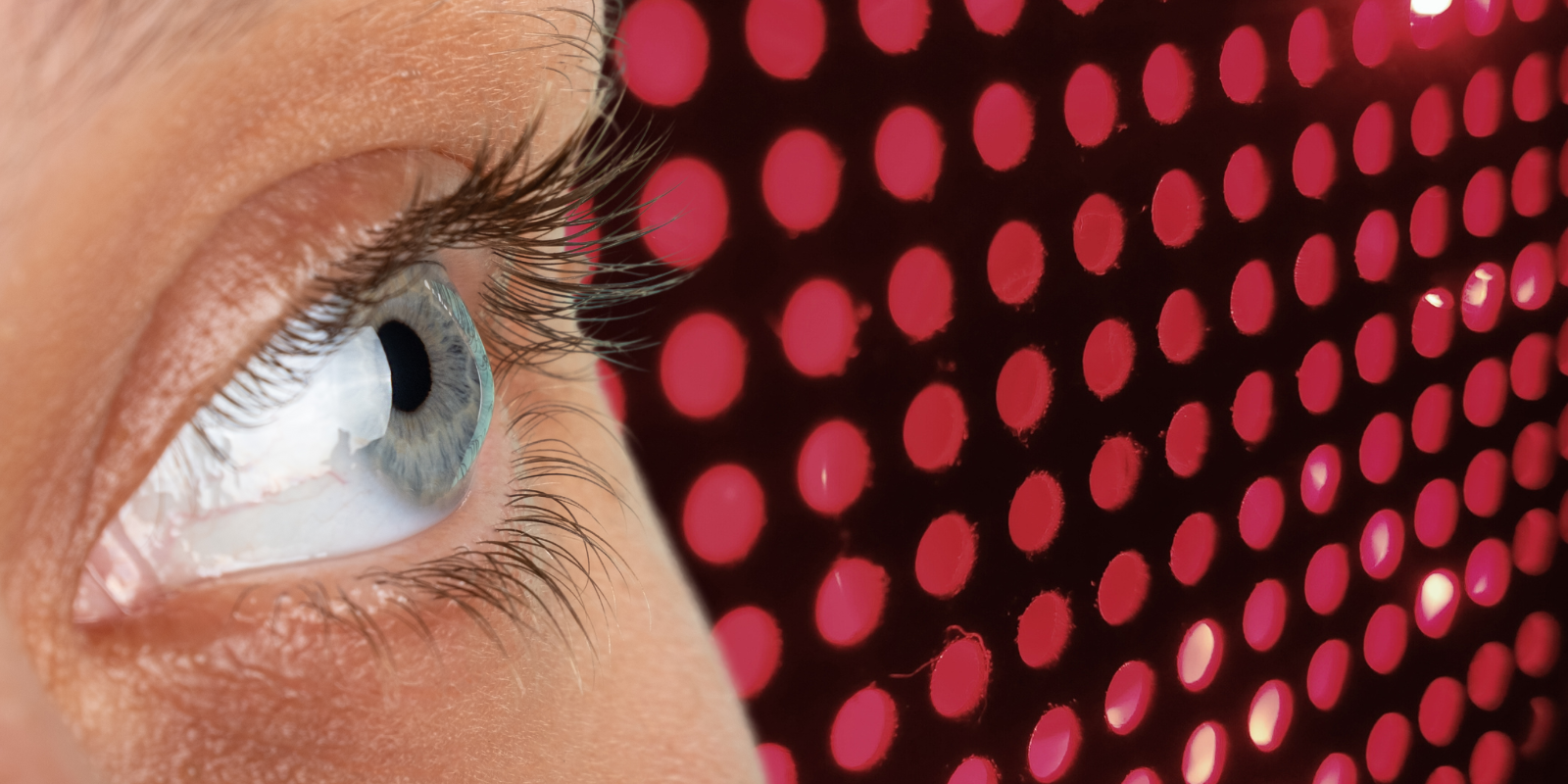What are some of the most common ways red light therapy is being utilized in optometry and ophthalmology?
There are a number of conditions that may improve with the use of red light therapy.
Red light therapy, often referred to as photobiomodulation, is being explored as a potential treatment for age-related macular degeneration (AMD), particularly for its potential to improve mitochondrial function in retinal cells and reduce oxidative stress.
Emerging research also suggests that red light therapy could slow the progression of myopia (nearsightedness) in children by influencing scleral remodeling and reducing axial elongation.
Additionally, there are some promising findings that it improves tear production and reducing inflammation on the ocular surface, offering relief to patients with dry eye disease, and some studies are investigating its use in improving optic nerve health by enhancing cellular energy production and reducing apoptosis in optic neuropathies.
Do these conditions have any common factors that make red light therapy a potential helpful option for treatment?
The conditions being investigated for potential treatment with red light therapy often share underlying mechanisms.
Many ocular diseases involve compromised cellular energy production. Red light therapy can help by stimulating mitochondrial activity. AMD and dry eye disease both involve oxidative damage, which red light therapy may mitigate through its anti-inflammatory effects.
Finally, chronic inflammation is a hallmark of many eye conditions, and red light therapy can modulate inflammatory pathways.
How is this therapy administered and does this process vary by patient or condition at all?
Red light therapy can be administered via light-emitting diode (LED) devices, lasers, or specialized lamps. The choice depends on the condition being treated, the depth of tissue penetration required, and the target area.
The duration, intensity, and wavelength of red light are tailored to the specific condition and patient needs. For example, myopia control may involve regular sessions with specific wavelengths, while dry eye treatment might require different parameters. These protocols are still evolving and much research still needs to be done.
Red light therapy not yet an approved treatment by the U.S. Food and Drug Administration. What kinds of research would be beneficial in determining its true effectiveness?
Rigorous, large scale prospective randomized controlled trials (RCTs) are necessary to confirm the efficacy of red light therapy across different ocular conditions. Long-term studies are also needed to help assess the sustained effects of red light therapy and any potential side effects. Research into the exact cellular and molecular mechanisms by which red light therapy exerts its effects, are also necessary to help clarify its potential and optimize treatment protocols.
What should patients consider when thinking about red light therapy?
While generally considered safe, patients should be aware of the potential risks, such as eye strain or damage from improper use. Patients should seek advice from eye care professionals to determine if red light therapy is appropriate for their condition.
As it’s still not widely approved, availability might be limited, and costs are not currently covered by insurance.
What do you expect the future holds for this therapy becoming more mainstream?
If ongoing research confirms its efficacy, red light therapy could become a non-invasive treatment option for various ocular conditions, much like its use in dermatology.
Improved delivery devices and more precise treatment protocols could make the therapy more accessible and effective. As evidence accumulates, we might see more regulatory approvals, which would increase its adoption in clinical settings.
Red light therapy is a rapidly evolving field with significant potential in optometry and ophthalmology. With ongoing research, it could become a key tool in managing and potentially preventing various ocular diseases.




